| OnLine members | | Currently: 16 |
| Total hits! |  |
| Puzzle! |  |
| Random Old Ads! | 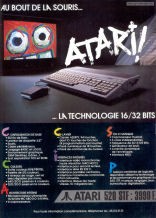 |
|
|
 |
Hardware information |
| Macintosh | released in 1984 - 1991 |  CPU: Macintosh Classic (1984) and Macintosh Plus (1986), Macintosh SE and SE/30 (1987 and 1991 respectively) with Motorola MC68000 at 7.83 MHz CPU: Macintosh Classic (1984) and Macintosh Plus (1986), Macintosh SE and SE/30 (1987 and 1991 respectively) with Motorola MC68000 at 7.83 MHz
MEMORY: Macintosh Classic (128k, 512k), Macintosh Plus/SE (1MB expandable to 4MB), Macintosh SE/30 (1MB expandable to 128MB)
GRAPHICS: Macintosh Classic/Plus/SE with Black & White screen, 512x342 pixels
SOUND: Macintosh Classic/Plus/SE (internal speaker). 8-bit mono 22 kHz (support 8-bit sampled monaural sound sampled at the 22.25 kHz horizontal blanking rate)
MEDIA/STORAGE: Macintosh Classic/Plus (Internal 400k single sided FDD, optional external floppy). Macintosh SE (Internal 400k FDD, internal drive bay for a hard disk (20MB or 40MB) or a second floppy).
|  The Macintosh is a series of personal computers designed, developed, and marketed by Apple Inc. Steve Jobs introduced the original Macintosh (128k) computer on January 10, 1984. This was the company's first mass-market personal computer featuring an integral graphical user interface and mouse. The Macintosh series subsequently updated with several models which are also based on Apple's same proprietary architecture. Since 1998, Apple has largely phased out the Macintosh name in favor of Mac. In 1998, Macintosh (branded as Mac since 1998). The Apple Macintosh computer series were the first computers using Graphic User Interface! Before the Macintosh, all computers were text-based - you operated them by typing words onto the keyboard. The Macintosh is run by activating pictures (icons) on the screen with a small hand-operated device called a mouse. Most modern-day computers now operate on this principle! The Macintosh is a series of personal computers designed, developed, and marketed by Apple Inc. Steve Jobs introduced the original Macintosh (128k) computer on January 10, 1984. This was the company's first mass-market personal computer featuring an integral graphical user interface and mouse. The Macintosh series subsequently updated with several models which are also based on Apple's same proprietary architecture. Since 1998, Apple has largely phased out the Macintosh name in favor of Mac. In 1998, Macintosh (branded as Mac since 1998). The Apple Macintosh computer series were the first computers using Graphic User Interface! Before the Macintosh, all computers were text-based - you operated them by typing words onto the keyboard. The Macintosh is run by activating pictures (icons) on the screen with a small hand-operated device called a mouse. Most modern-day computers now operate on this principle!
| |
| |
| Macintosh Color Classic | released in 1993 - 1994 |  CPU: 16 MHz Motorola 68030 (Macintosh Color Classic), 33 MHz Motorola 68030 (Macintosh Color Classic II). Both could handle an optional 68882 FPU. CPU: 16 MHz Motorola 68030 (Macintosh Color Classic), 33 MHz Motorola 68030 (Macintosh Color Classic II). Both could handle an optional 68882 FPU.
MEMORY: Macintosh Color Classic (4 MB) with two RAM slots expandable to 10 MB (36 MB for the Color Classic II)
GRAPHICS: Standard VRAM: 256k, Maximum VRAM:512k, 512x342 pixels resolution, 256 colors
SOUND: Mono 16-bit, Built-in speaker, sound output jack
MEDIA/STORAGE: 1.44 MB internal FDD (optional external floppy), 40MB to 160MB internal SCSI HDD).
|  The Macintosh Color Classic (also known as Performa 250) had same footprint as the original Macintosh. It was the first mac using a 10" (9" viewable) color monitor (Sony CRT). Its main board had the same design as the Mac LC II, featuring a 16 MHz 68030 CPU. Its limited 16 bit address bus allowed only 10MB of maximum RAM. The Color Classic II (also known as Performa 275) was launched in late 1993, and had the same motherboard as the LC/Performa 550 with a 33 MHz CPU, a 32-bit bus and up to 36 MB of available RAM. The Macintosh Color Classic (also known as Performa 250) had same footprint as the original Macintosh. It was the first mac using a 10" (9" viewable) color monitor (Sony CRT). Its main board had the same design as the Mac LC II, featuring a 16 MHz 68030 CPU. Its limited 16 bit address bus allowed only 10MB of maximum RAM. The Color Classic II (also known as Performa 275) was launched in late 1993, and had the same motherboard as the LC/Performa 550 with a 33 MHz CPU, a 32-bit bus and up to 36 MB of available RAM.
| |
 | | 8bit RGB 256-color palette (16 to 256 on-screen) | | |
| Macintosh LC - Performa | released in 1993 - 1996 |  CPU: Motorola 68030 @ 16 MHz (LC II), Motorola 68030 @ 25 MHz (LC III) or 33 MHz (LC III+) CPU: Motorola 68030 @ 16 MHz (LC II), Motorola 68030 @ 25 MHz (LC III) or 33 MHz (LC III+)
Motorola 68LC040 @ 25 MHz or 33 Mhz (Performa 4xx,5xx,6xx series)
MEMORY: 4 MB, expandable to 10 MB (LC II) or 36 MB (LC III)
4-8 MB, expandable to 132 MB (Performa 4xx,5xx,6xx series)
GRAPHICS: 256kb (LC II), 512kb (LC III) of onboard VRAM and a single slot that accepts a 256kb VRAM SIMM, two onboard VRAM slots (LC 475 and Performa series), taking two 256 KB VRAM SIMMs or two 512 KB VRAM SIMMs.
With 512kb of VRAM (LC series): 512x384 or 640x480 with 32768 colors and 832x624 with 256 colors. Upgraded to 768k of VRAM, it can support up to 832x624 with 32768 colors. With 512kb of VRAM (Performa series): same as LC series but also 1024x768 and 1152x870 with 16 colors. Upgraded to 1MB of VRAM, it can support up to 832x624 with 32768 colors and 1024x768 and 1152x870 with 256 colors.
SOUND: 8-bit mono 11 or 22 kHz (support 8-bit sampled monaural sound sampled at the 22.25 kHz horizontal blanking rate) supplying same signal to both
channels of stereo equipment
MEDIA/STORAGE: 1.44 MB internal FDD (optional external floppy), 40MB to 160MB internal SCSI HDD (LC II, LC III), 250MB to 320 MB (Performa all series), 2X CD-ROM (Performa 5xx, 6xx)
|  The Macintosh LC II was the well-known "pizza box" upgradable Macintosh, very similar configuration to the original Macintosh LC, but with 68030 processor and a PMMU chip for virtual memory. It lacked alack dual disk drive capability. The Macintosh LC II was the well-known "pizza box" upgradable Macintosh, very similar configuration to the original Macintosh LC, but with 68030 processor and a PMMU chip for virtual memory. It lacked alack dual disk drive capability.
The Macintosh LC III replaced the commercially successful Macintosh LC II in Apple's lineup of mid-range computers, offering a faster processor on a 32-bit bus, supporting more RAM and improved graphics capabilities.
The Performa series is the educational version of the LC series, but also with faster processor on a 32-bit bus, faster and more RAM and improved graphics capability.
The model names reflect a decision made at Apple in 1993 to follow an emerging industry trend of naming product families for their target customers – Quadra xxx for business, LC xxx for education, and Performa xxx for home use.
| |
 | | 15bit RGB 32,768-color palette (16, 256 to 32768 on screen) | | |
|
|
|
| Our featured games | 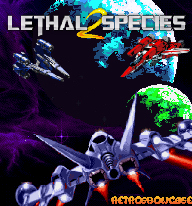 |
| Play old-school now! |  |
| Music Player! | 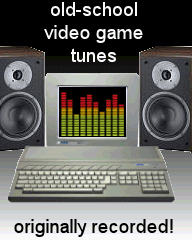 |
| Play ZX on-line!! | 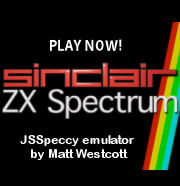 |
| Play CPC on-line!! | 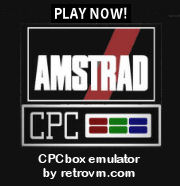 |
| Boot Screens! |  |
| Retro-games Trivia! |  |
| Old-school Crossword! |  |
| Is this my palette? | 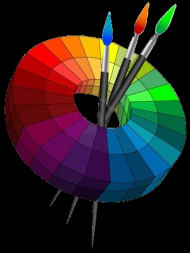 |
| The logo evolution! |  |
| Manuals! |  |
| Beat them All! |  |
|
















 CPU: Macintosh Classic (1984) and Macintosh Plus (1986), Macintosh SE and SE/30 (1987 and 1991 respectively) with Motorola MC68000 at 7.83 MHz
CPU: Macintosh Classic (1984) and Macintosh Plus (1986), Macintosh SE and SE/30 (1987 and 1991 respectively) with Motorola MC68000 at 7.83 MHz  The Macintosh is a series of personal computers designed, developed, and marketed by Apple Inc. Steve Jobs introduced the original Macintosh (128k) computer on January 10, 1984. This was the company's first mass-market personal computer featuring an integral graphical user interface and mouse. The Macintosh series subsequently updated with several models which are also based on Apple's same proprietary architecture. Since 1998, Apple has largely phased out the Macintosh name in favor of Mac. In 1998, Macintosh (branded as Mac since 1998). The Apple Macintosh computer series were the first computers using Graphic User Interface! Before the Macintosh, all computers were text-based - you operated them by typing words onto the keyboard. The Macintosh is run by activating pictures (icons) on the screen with a small hand-operated device called a mouse. Most modern-day computers now operate on this principle!
The Macintosh is a series of personal computers designed, developed, and marketed by Apple Inc. Steve Jobs introduced the original Macintosh (128k) computer on January 10, 1984. This was the company's first mass-market personal computer featuring an integral graphical user interface and mouse. The Macintosh series subsequently updated with several models which are also based on Apple's same proprietary architecture. Since 1998, Apple has largely phased out the Macintosh name in favor of Mac. In 1998, Macintosh (branded as Mac since 1998). The Apple Macintosh computer series were the first computers using Graphic User Interface! Before the Macintosh, all computers were text-based - you operated them by typing words onto the keyboard. The Macintosh is run by activating pictures (icons) on the screen with a small hand-operated device called a mouse. Most modern-day computers now operate on this principle! CPU: 16 MHz Motorola 68030 (Macintosh Color Classic), 33 MHz Motorola 68030 (Macintosh Color Classic II). Both could handle an optional 68882 FPU.
CPU: 16 MHz Motorola 68030 (Macintosh Color Classic), 33 MHz Motorola 68030 (Macintosh Color Classic II). Both could handle an optional 68882 FPU. The Macintosh Color Classic (also known as Performa 250) had same footprint as the original Macintosh. It was the first mac using a 10" (9" viewable) color monitor (Sony CRT). Its main board had the same design as the Mac LC II, featuring a 16 MHz 68030 CPU. Its limited 16 bit address bus allowed only 10MB of maximum RAM. The Color Classic II (also known as Performa 275) was launched in late 1993, and had the same motherboard as the LC/Performa 550 with a 33 MHz CPU, a 32-bit bus and up to 36 MB of available RAM.
The Macintosh Color Classic (also known as Performa 250) had same footprint as the original Macintosh. It was the first mac using a 10" (9" viewable) color monitor (Sony CRT). Its main board had the same design as the Mac LC II, featuring a 16 MHz 68030 CPU. Its limited 16 bit address bus allowed only 10MB of maximum RAM. The Color Classic II (also known as Performa 275) was launched in late 1993, and had the same motherboard as the LC/Performa 550 with a 33 MHz CPU, a 32-bit bus and up to 36 MB of available RAM.
 CPU: Motorola 68030 @ 16 MHz (LC II), Motorola 68030 @ 25 MHz (LC III) or 33 MHz (LC III+)
CPU: Motorola 68030 @ 16 MHz (LC II), Motorola 68030 @ 25 MHz (LC III) or 33 MHz (LC III+) The Macintosh LC II was the well-known "pizza box" upgradable Macintosh, very similar configuration to the original Macintosh LC, but with 68030 processor and a PMMU chip for virtual memory. It lacked alack dual disk drive capability.
The Macintosh LC II was the well-known "pizza box" upgradable Macintosh, very similar configuration to the original Macintosh LC, but with 68030 processor and a PMMU chip for virtual memory. It lacked alack dual disk drive capability.